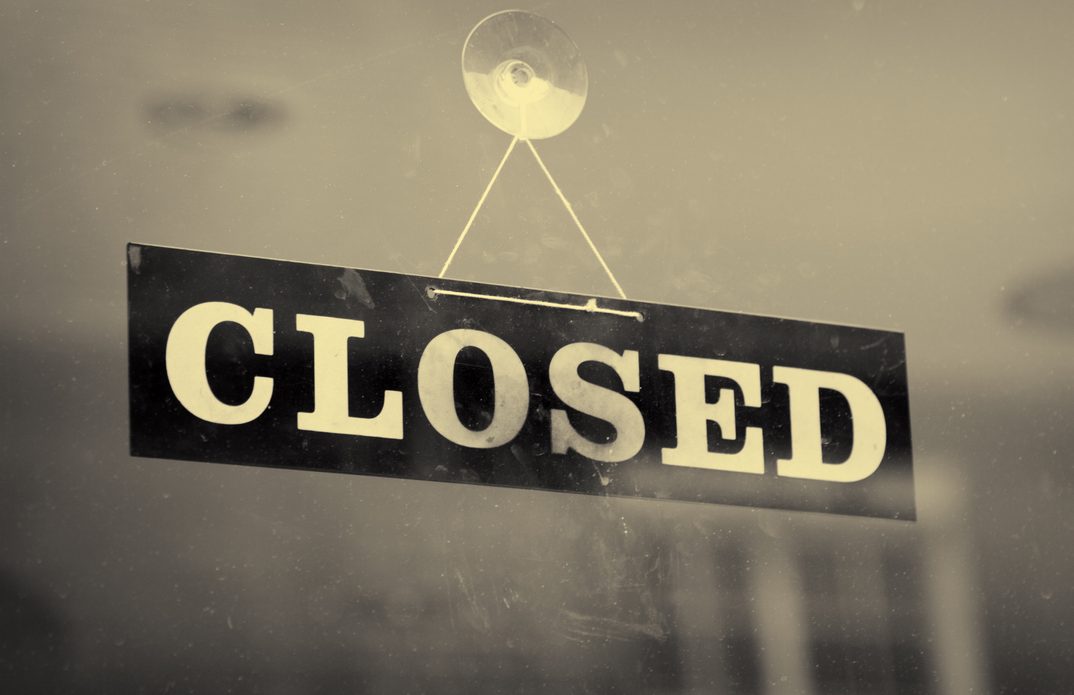Its team of gifted writers was finally squandered on a vendetta against a party that had moved on.
A Partial Defense of The Weekly Standard

At least TWS made arguments. At most, it made writers.
A few days before I sat down to write this, I went in to work on a Saturday and cleaned out my office. The more proximate causes of the demise of The Weekly Standard, where I had been a writer for eight years, are still the source of some debate and feelings are so raw you’ll forgive me if I choose to sidestep them here. Before grabbing my boxes and heading out of the building, however, for good, my wife snapped a sentimental photo of me standing in my empty office. If you’re looking for evidence that Donald J. Trump threatens once venerable (if small) Washington institutions, I would like to submit my sullen expression as exhibit A. Clearly, Trump’s bull-in-the-Mikasa-outlet presidency aims to test exactly how anti-Washington many establishment conservatives really are, and it’s a complicated calculus for us right-of-center swamp dwellers. After all, our conservative bona fides may depend on a personal stake in the institution being threatened.
The Weekly Standard was once such an influential publication that, some years before I arrived there, it was widely blamed for having started a war. Now it is no more. But it’s easy to forget that invading Iraq was such a consensus opinion that the last Democratic candidate for president supported it, so blaming it on the scheming of the Neocon warmongers running a small circulation political magazine is absurd. And given the strength of that foreign policy consensus just a few years ago, it’s a remarkable reversal that a Republican president now wants to draw down in Afghanistan after invading and occupying the country for 17 years, as well as pull out of Syria—even if it means withdrawing so abruptly the most beloved military figure of the 21st century resigned from his cabinet in protest.
Of course, it should be said that James Mattis being the most beloved military figure of the 21st century carries about as backhanded a distinction as being the prettiest girl at a Radcliffe mixer. Seventeen years after 9/11, it’s increasingly clear that voters, right and left, no longer have much invested in America’s interventionism in the Middle East. When Trump announced he was pulling troops out of Syria and Afghanistan there were lots of not unreasonable calls for the president to explain his thinking. But that only prompts a larger question: who was still bothering to explain our Middle East policy to voters in the years before Trump arrived on the scene?
But this question could be asked of any number of the policies that Trump has exposed as a festering wound on our body politic. What about our total lack of immigration enforcement? Or a quarter century of trade policies that have done nothing but greatly bolster the economy of a hostile superpower that also happens to be the worst human rights abuser in the world?
Well, one good way to understand what’s been going on was to pony up $70 a year and subscribe to exceptionally well-edited, insider-y D.C. magazines. Believe me, it was wonderful work if you could get it. But suggesting The Weekly Standard’s existence was a benefit to politically interested readers and made valuable contributions to the national debate is less self-serving than it sounds. No matter how fatal a mistake you think it may have been to invade Iraq and establish the precedent for the Middle East escapades, there’s at least an argument to be made that much of The Weekly Standard’s subsequent editorial advice—which warned against Rumsfeld’s obvious miscalculations, advocated early on for the surge, and inveighed against the Obama administration’s mishandled Iraq withdrawal that paved the way for the rise of ISIS—was useful and correct.
But for those of us who worked there—and really anyone who read the magazine regularly—editorializing was a small part of what was going on. It was first and foremost a place to be a writer. The magazine’s political identity and editorial stances didn’t limit the dizzying array of subject matter the individual writers addressed. Years ago, I wrote a lengthy article for The Weekly Standard about how urban planning (or the lack thereof) in Portland, Oregon, had become a national model. I remember walking out of a 20-minute fact checking and editing session regarding a lengthy aside I had written about the city’s vegan strip club. I had a point to make about cultural excess and zoning laws, but really it was all a set-up so I could crack a joke about how this particular strip club was a place “where the women are treated like pieces of tofu.” At the time I remember walking out of the office thinking, how many places would indulge me like that?
Indulging me usually required some discernment from some of the best editors in the business, and fortunately for them, other writers at The Weekly Standard were less needy. It’s not an exaggeration to say that much of the magazine’s reason for being was serving as a platform for three of the best writers alive, Andy Ferguson, Matt Labash, and Christopher Caldwell—all of whom worked for the magazine since the day it opened for business. Ferguson and Labash were at least as well known for writing pieces that were very amusing and cultural as they were for their political insight. Caldwell’s writing was often more political; he started writing extensively about the volatile relationship between immigration and populism in Europe over a decade ago. It is no small irony that Caldwell, and much of what he wrote for The Weekly Standard, now looks astonishingly prescient regarding the rise of Donald Trump.
Unfortunately, no matter how much the magazine was really an amalgamation of different styles and opinions, the magazine’s strong editorial voice would define it. Aside from the Iraq war, The Weekly Standard is now perhaps as well known for being an institution on the right that dared to stand athwart Donald Trump yelling stop, even though 90 percent of our potential subscriber base voted for him and didn’t want to hear it. If The Weekly Standard had merely been required to continue opposing the left, I have little doubt it would still be thriving. But as any good warmonger can tell you, two front wars are much harder to win.
For conservatives stuck in the paradoxical situation of being invested in what happens inside the beltway, the question now is whether what Trump is doing to institutional Washington amounts to creative destruction or merely punishing the bastards…and if there is even a difference? The Weekly Standard will be talked about for decades hence. I hope it is for the quality of writing the magazine produced, and not because the frequently unfair and gross oversimplification of its various editorial stands made it an avatar of the institutional Washington that needs to be destroyed. If you think it’s appalling that, say, the census bureau reports that, between 2013 and 2017, the five wealthiest counties in America by median income immediately surround D.C., well, The Weekly Standard would agree with you. I wrote as much in the final issue.
Fortunately for me, the fact D.C. is thriving at everyone else’s expense also means that it’s a good place to be unemployed and looking for a job, even if my only marketable skill is a hit or miss ability to string sentences together. To paraphrase Rudyard Kipling, another better writer who also knew a thing or two about imperial hubris and Afghan wars, Washington D.C. is a place where all men are paid for existing, and none of them pay for their sins.
The American Mind presents a range of perspectives. Views are writers’ own and do not necessarily represent those of The Claremont Institute.
The American Mind is a publication of the Claremont Institute, a non-profit 501(c)(3) organization, dedicated to restoring the principles of the American Founding to their rightful, preeminent authority in our national life. Interested in supporting our work? Gifts to the Claremont Institute are tax-deductible.
Conservatives are learning the hard way they can’t defend the American regime without defending the American state.
The real problem holding back the American Right is its leaders who think there is no problem but for Donald Trump.



